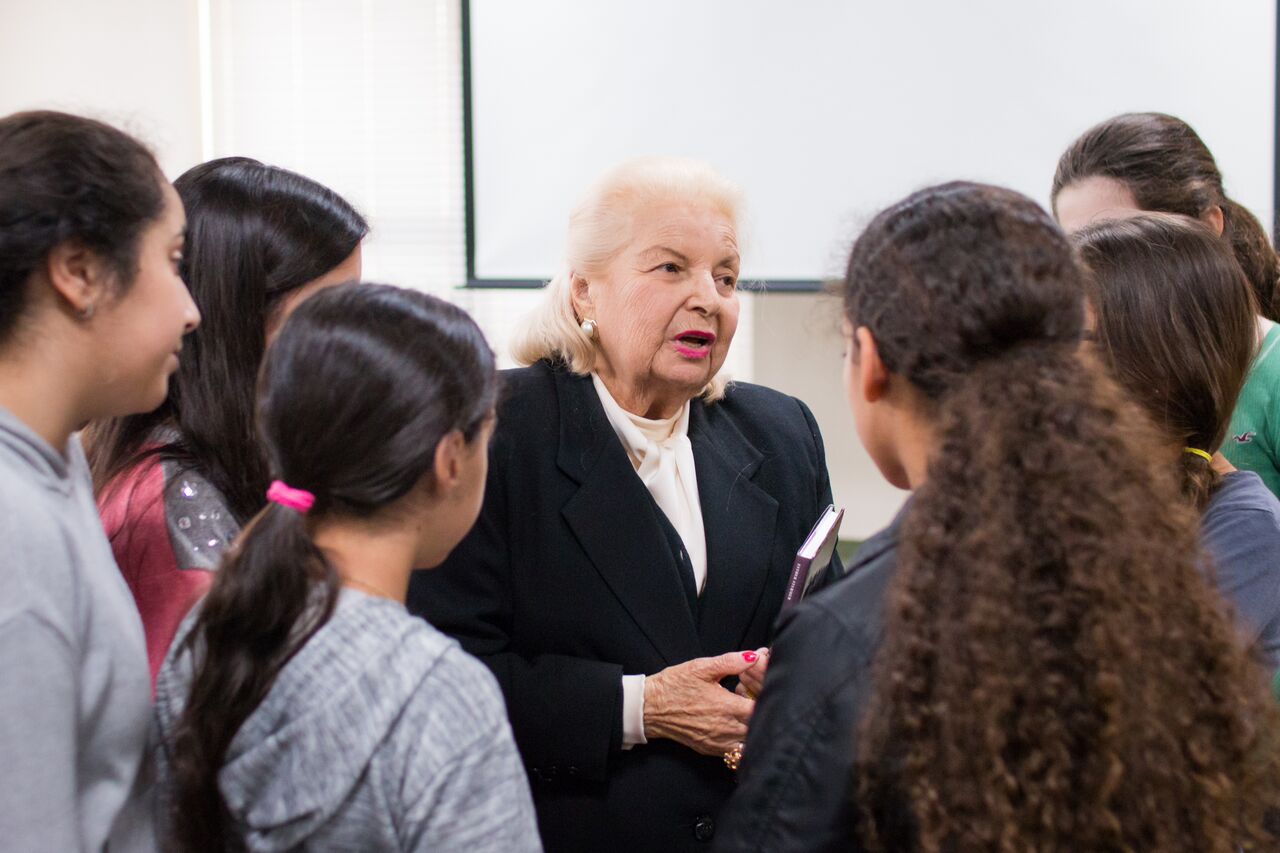Lake Success resident Sonia Hochman shared how she survived the Holocaust with students at Yeshiva Har Torah on Monday, bringing some to tears.
Her story was part of the school’s Yom Hashoah Commemoration Program, an academic curriculum where students learn about collective memory, the history of the Jewish people and the Holocaust. An appearance by a survivor is meant to add a human face to the tragedy and help prevent it from happening again.
“It’s when they get to hear and see a survivor, and it’s extremely meaningful to them,” said Shani Marks Hollander, assistant principal of general studies for grades 5 through 8 at Yeshiva Har Torah.
“It’s more about the conversation — the giving over of the story,” Hollander added.
Sonia Hochman, 83, born in Korolowka, Poland, still remembers the sound of pounding boots and Germans screaming, hunting for Jews to send to concentration camps in 1941. She was only 8 years old.
At the time, she and members of her family were hidden in a bunker beneath horses and hay. She was cuddled up to her grandmother while her little sister, Sima, was with her mother. Her heart still races thinking about it.
“Scared,” Hochman recalled feeling. “Like, panic scared.”
While the Germans did not discover any of the six bunkers her grandmother, her mother’s mother, helped devise, Hochman remembered seeing people in the streets disoriented the next day.
“Those people tried to hide in separate places so if one is caught, maybe somebody will survive in the family,” she said.
Hochman then ran to her other grandparents’ house. The food was there because they had prepared it for the holidays. But her great grandfather had been shot, while her grandmother, uncle and five aunts were taken away.
“In one day, they erased my father’s family,” Hochman said.
Living in Eastern Europe was different. One had to elude both Nazis and Ukrainian police. Also, rather than being sent to camps, Jews were often shot on sight, Hochman said, and forced to dig their own graves.
Hochman, two of her uncles, her grandparents and parents managed to escape. Her uncle Nissel, who was in the Polish military, managed to find the first grotto, the Vertabe cave.
This habitation lasted a few months, before the Gestapo found them. Two people were killed. Hochman and her family once more eluded capture.
Ultimately, they found Priest’s Grotto. Neither Hochman nor her sister left the cave between May 1943 and April 1944. There they survived on potatoes, corn, soup and pizza bread.
“This was the last place we could hide,” Hochman said.
Although Eastern Europe had largely been liberated by Soviet troops in 1944, her family soon discovered that violence against Jews continued. The family moved to Borszczow. Both her father and grandfather were killed by year’s end.
Hochman, her grandmother, sister and mother were detained in Czechoslovakia in 1945. But eventually, they were able to leave Prague for the Föhrenwald Displaced Persons Camp in Germany.
At 14 years old, in 1947, Hochman traveled alone to New York. She attended school while in foster care. Her grandmother did not arrive for another two years. Her sister and mother followed.
“When I came to America, I came by myself and I had a dream. My father was telling me not to be afraid,” Hochman said.
To this day, Hochman still gets teary when recalling the family she lost, especially her father and grandparents. But telling the story is imperative to prevent tragedies like the Holocaust from happening again, she said.
“I owe it to the children who didn’t survive,” Hochman said.
“My father would want me to tell this story.”



